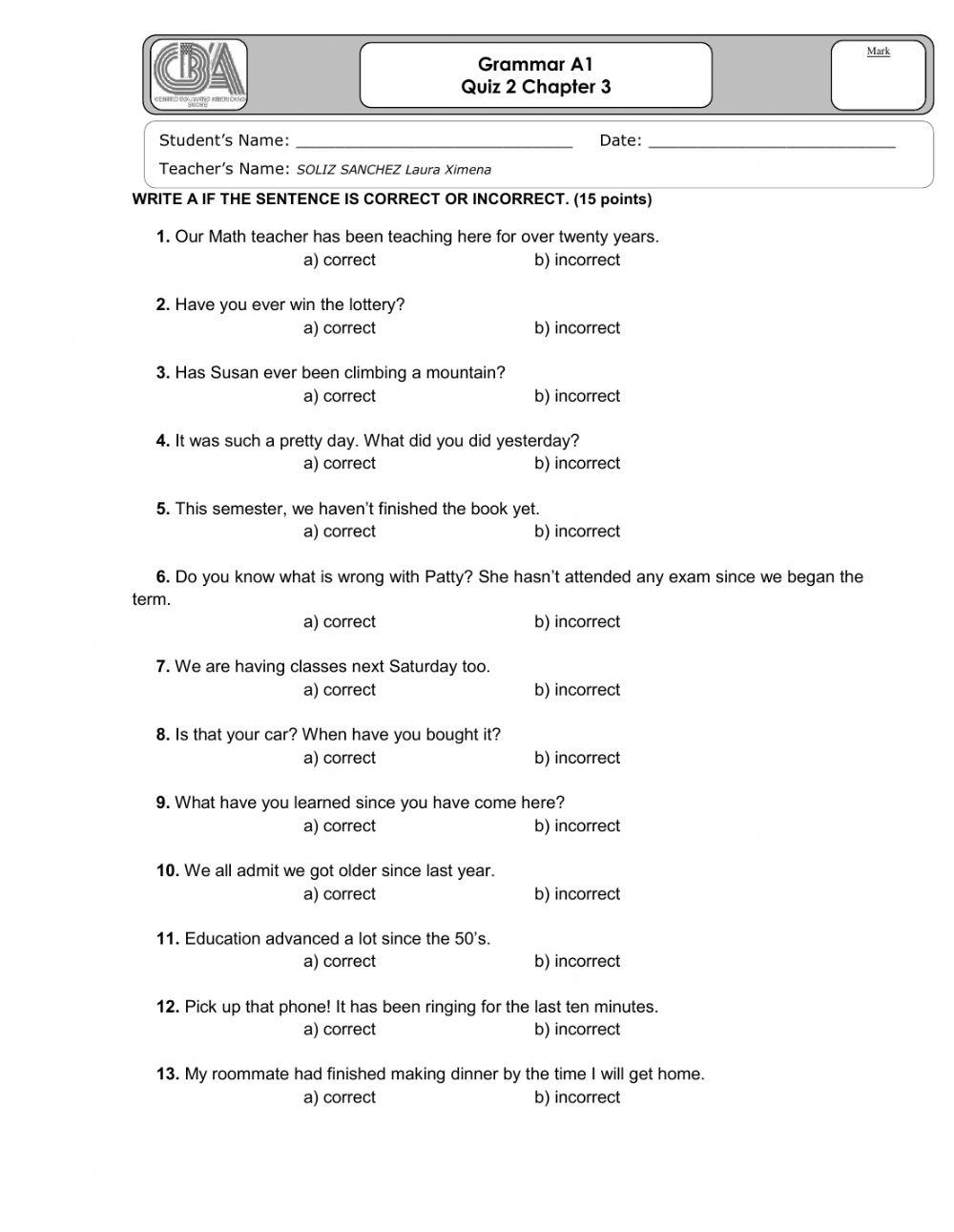
The Unseen Architect: How A1 Grammar Worksheets Build Language Foundations
Embarking on a journey to learn a new language is an exciting endeavor, and a strong foundation in grammar is paramount to success. For beginners, specifically those at the A1 level of the Common European Framework of Reference for Languages (CEFR), A1 grammar worksheets serve as an invaluable tool, acting as the unseen architect that meticulously lays the groundwork for future linguistic proficiency. These seemingly simple exercises are, in fact, sophisticated instruments designed to introduce core grammatical concepts in an accessible, digestible, and highly effective manner.
The A1 level signifies a "breakthrough" or "beginner" stage, where learners can understand and use very basic everyday expressions and introduce themselves and others. At this stage, grammar isn’t about complex tenses or nuanced structures; it’s about the fundamental building blocks that allow for simple communication. Without a solid grasp of these basics, progression becomes arduous, and confidence can wane. This is precisely where the power of A1 grammar worksheets comes into play. They provide the structured, repetitive practice necessary to internalize rules that, while simple, are absolutely essential.
Why A1 Grammar is Crucial and How Worksheets Support It
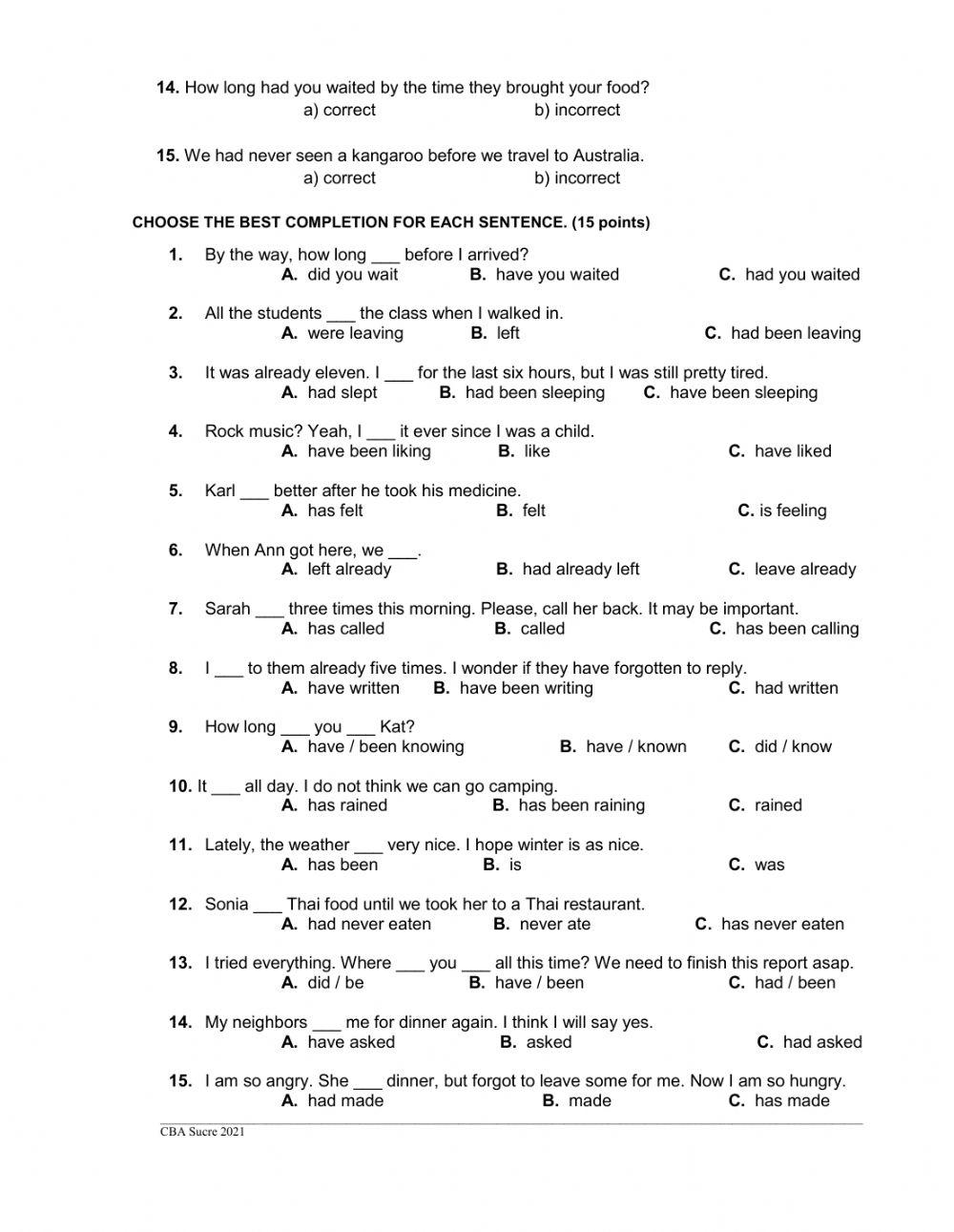
Grammar, often perceived as a daunting aspect of language learning, is simply the set of rules governing how words combine to form meaningful sentences. For A1 learners, these rules are mercifully straightforward, focusing on immediate communicative needs. Consider the difference between "I student" and "I am a student." The addition of "am" and "a" transforms a jumble of words into a grammatically correct and understandable statement. A1 grammar worksheets are specifically crafted to highlight and reinforce these vital distinctions.

The core grammar topics covered at the A1 level typically include:

- The verb "to be" (am, is, are): Fundamental for identity, descriptions, and locations. Worksheets will often have exercises asking learners to correctly conjugate "to be" with different pronouns, such as "I a student" or "They from Spain."
- Personal and Possessive Pronouns: (I, you, he, she, it, we, they; my, your, his, her, its, our, their). Understanding who is doing what, and who owns what, is basic to communication.
- Simple Present Tense: For habits, routines, and general truths. Worksheets will feature fill-in-the-blanks or sentence transformation exercises (e.g., "He lives in London" to "He doesn’t live in London").
- Articles (a, an, the): Differentiating between indefinite and definite nouns is a key step.
- Plural Nouns: Forming plurals (regular and irregular) to talk about multiple items.
- Basic Prepositions of Place and Time: (in, on, at, under, next to, etc.). Essential for describing location and scheduling.
- Adjectives: Simple descriptive adjectives (big, small, good, bad).
- Question Words: (Who, what, where, when, why, how). Forming basic questions is critical for interaction.
- Numbers, Colors, and Basic Vocabulary: Often integrated into grammar exercises to provide context.
- "There is / There are": For indicating existence.

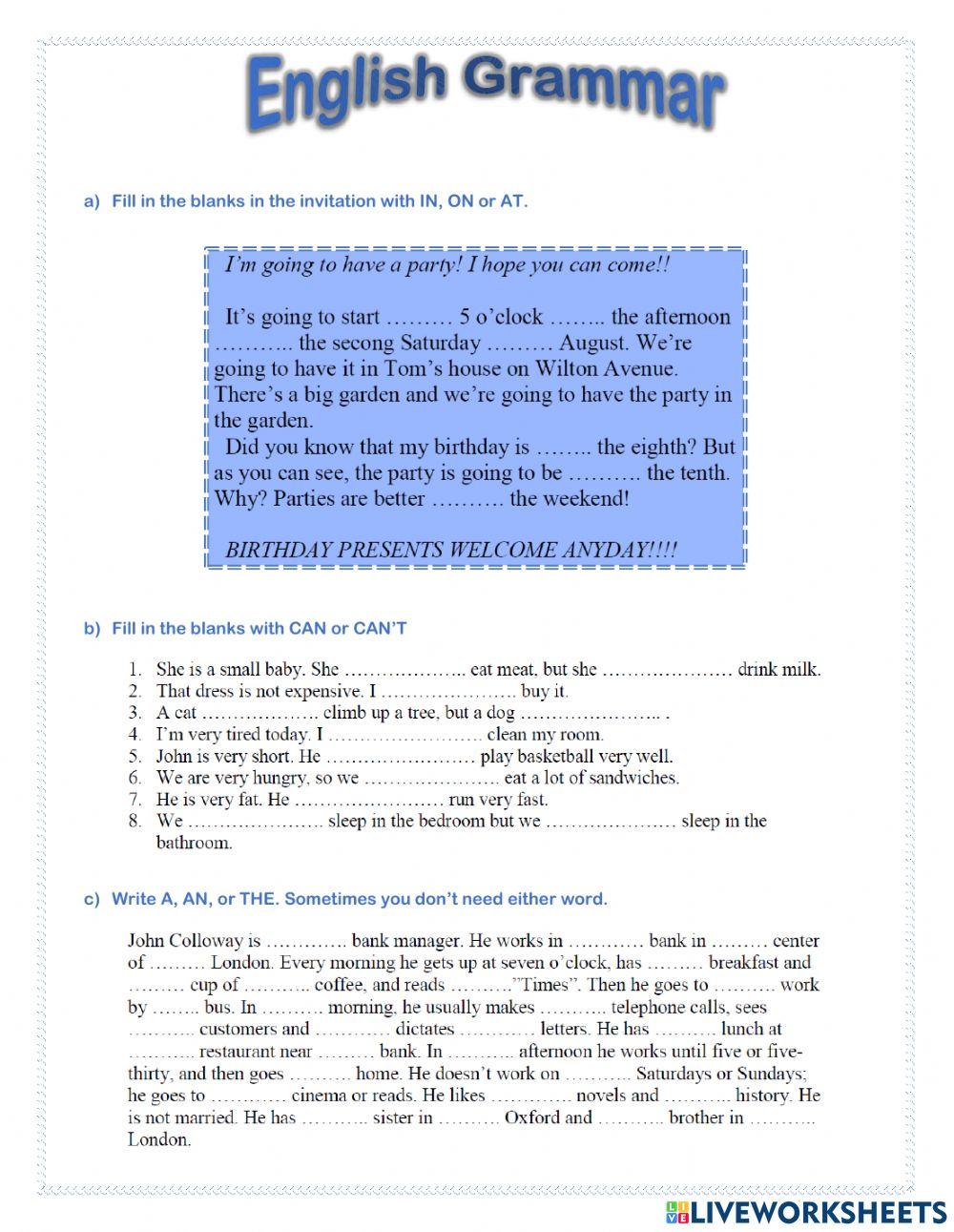
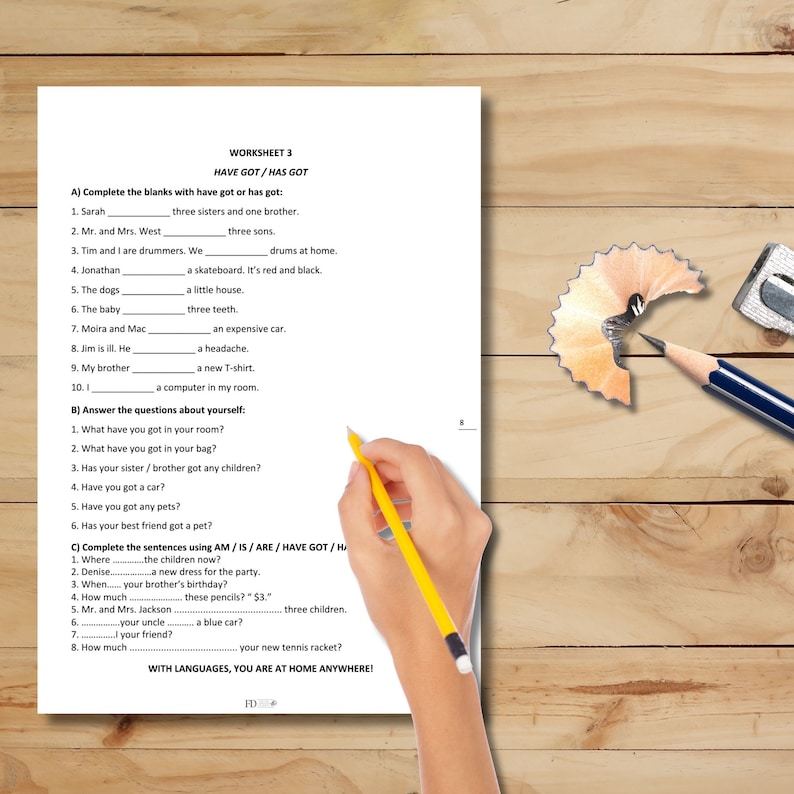
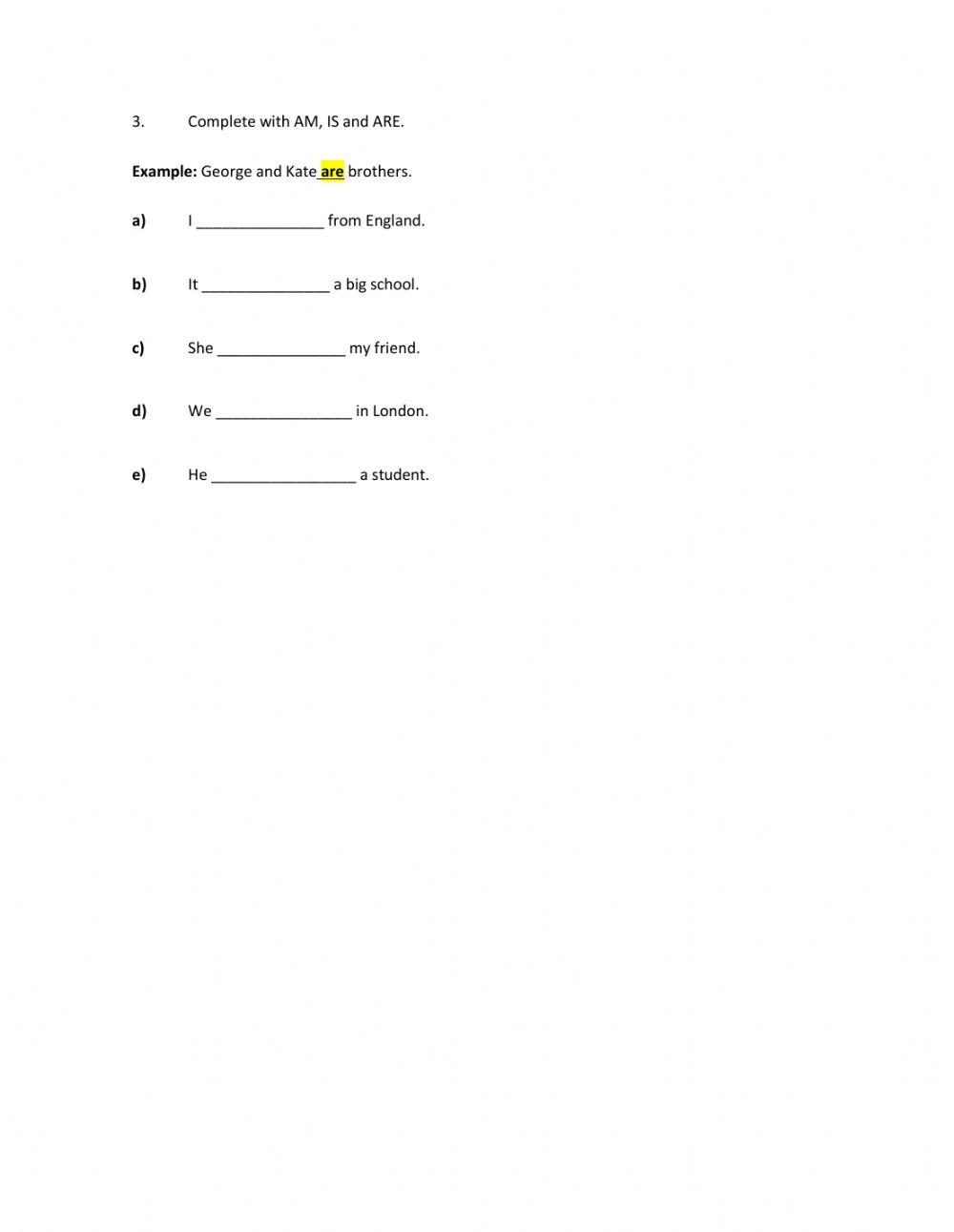
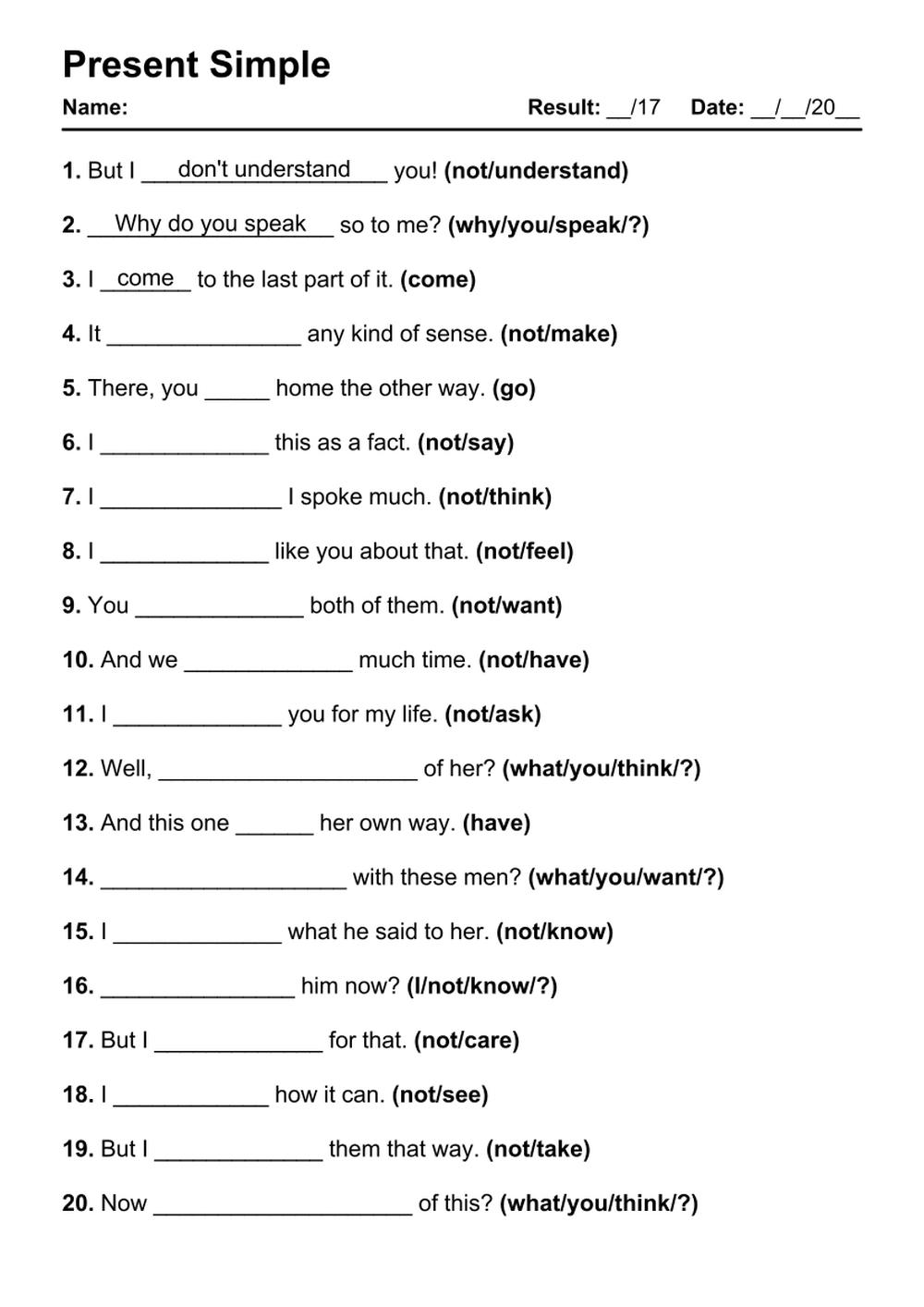
Worksheets provide focused practice on each of these points in isolation before gradually combining them. This modular approach prevents overwhelm and allows learners to master one concept before moving to the next.

The Multifaceted Benefits of Utilizing A1 Grammar Worksheets
The benefits of incorporating A1 grammar worksheets into a language learning routine are multifaceted, catering to both independent learners and those studying in a classroom setting.
- Reinforcement and Repetition: Language acquisition thrives on repetition. Worksheets offer a structured way to practice new grammar points multiple times, embedding them deeper into the learner’s memory. This repeated exposure helps automaticity, moving learners beyond conscious rule application to more intuitive usage.
- Structured Learning: Worksheets break down complex grammar into manageable chunks. Each exercise targets a specific rule, ensuring that learners focus on one concept at a time, reducing cognitive overload.
- Self-Paced Learning: Independent learners can work through worksheets at their own speed, reviewing difficult sections as many times as needed. This autonomy fosters a sense of control and responsibility over one’s learning journey.
- Immediate Feedback (with Answer Keys): Many worksheets come with answer keys, allowing learners to check their work instantly. This immediate feedback loop is crucial for identifying mistakes and correcting them before they become ingrained habits. It also provides a sense of accomplishment when answers are correct.
- Error Identification: By engaging with various exercise types, learners can pinpoint specific areas of weakness. If a student consistently struggles with subject-verb agreement in the simple present, the worksheets clearly highlight this need for further practice.
- Tangible Progress: Completing a worksheet and seeing a high score, or simply understanding a concept that was previously confusing, provides concrete evidence of progress. This can be a significant motivator for beginners, who often need encouragement to continue.
- Supplement to Classroom Learning: For students attending classes, worksheets are an excellent way to consolidate what’s been taught. They provide extra practice beyond textbook exercises, reinforcing classroom lessons and helping students prepare for assessments.
- Accessibility and Cost-Effectiveness: A vast array of A1 grammar worksheets are available for free online, making them an incredibly accessible resource for anyone with internet access. Even paid versions or workbooks are generally affordable, offering immense value.
Diverse Formats of A1 Grammar Worksheets
A good set of A1 grammar worksheets isn’t just about fill-in-the-blanks. Variety in exercise types keeps learners engaged and tests understanding in different ways. Common formats include:
- Fill-in-the-Blanks: The most common type, where learners complete sentences with the correct grammatical form (e.g., "She ____ (be) a doctor.").
- Matching: Pairing elements like pictures with sentences, questions with answers, or singular nouns with their plural forms.
- Multiple Choice: Selecting the correct option from a given set.
- Sentence Reordering: Unscrambling words to form grammatically correct sentences (e.g., "student / a / is / He" becomes "He is a student.").
- Error Correction: Identifying and correcting grammatical mistakes in given sentences. This requires a deeper understanding of the rules.
- True/False Statements: Testing comprehension of grammatical concepts within a context.
- Picture-Based Activities: Using images to prompt sentences or answer questions, linking grammar to visual cues.
- Short Answer Questions: Encouraging learners to produce their own grammatically correct responses.
This diversity ensures that different learning styles are catered to and that learners don’t become bored with repetitive exercise formats.
Maximizing the Effectiveness of A1 Grammar Worksheets
Simply completing worksheets isn’t enough; maximizing their effectiveness requires a strategic approach:
- Consistent Practice: Short, regular sessions are more effective than infrequent, long ones. Dedicate 15-20 minutes daily or every other day to grammar practice.
- Understand, Don’t Just Memorize: Before attempting exercises, ensure you understand the rule being taught. Don’t just copy answers; strive to grasp why a particular answer is correct.
- Contextualize: Whenever possible, try to relate the grammar points to real-life situations. If a worksheet is about "there is/are," think about things in your own room or city.
- Review and Correct Thoroughly: Don’t just mark answers right or wrong. For incorrect answers, go back to the rule, try to understand where you went wrong, and then re-do the exercise or a similar one.
- Combine with Other Skills: Grammar is a tool for communication. After completing a worksheet, try to use the newly practiced grammar point in simple speaking or writing exercises. For example, after a worksheet on "to be," describe yourself and your family.
- Seek Feedback: If you have a teacher or a language partner, ask them to review your completed worksheets or discuss your errors. An external perspective can provide invaluable insights.
- Don’t Over-rely: While crucial, worksheets are just one component of language learning. Balance them with listening, speaking, reading, and vocabulary acquisition.
Where to Find Quality A1 Grammar Worksheets
Navigating the vast ocean of online resources, finding high-quality A1 grammar worksheets can seem daunting, but many reputable sources offer excellent materials:
- ESL/EFL Websites: Sites like British Council LearnEnglish, ESL-Lounge, BusyTeacher, All Things Grammar, and EnglishClub offer extensive free libraries of worksheets categorized by CEFR level and grammar point.
- Educational Publishers: Major publishers such as Cambridge University Press, Oxford University Press, and Pearson often provide supplementary worksheets on their websites for their textbooks, or as standalone resources.
- Teacher-Created Platforms: Websites like Teachers Pay Teachers allow educators to share and sell their materials. You can often find highly creative and effective worksheets here, though many are paid.
- Language Learning Apps: Some apps, while primarily focusing on interactive lessons, integrate downloadable worksheets for further practice.
- Textbooks and Workbooks: Traditional language learning textbooks almost always come with accompanying workbooks filled with grammar exercises. These are often well-structured and progressive.
When choosing a worksheet, look for clear instructions, examples, varied exercise types, and ideally, an answer key.
Potential Pitfalls and Considerations
While invaluable, it’s important to be aware of the potential downsides of over-relying on worksheets:
- Decontextualized Grammar: Some worksheets might present grammar rules in isolation, without sufficient context. It’s crucial for learners to understand how these rules apply in real communication.
- Lack of Productive Skills: Worksheets primarily test receptive and controlled productive skills. They don’t inherently develop spontaneous speaking or free writing abilities, which require active production and interaction.
- Monotony: Doing too many similar exercises can lead to boredom and burnout. Varying worksheet types and integrating them with other activities is key.
- Quality Variation: Not all worksheets are created equal. Some might have errors, be poorly designed, or not align with the learner’s specific needs. Critical selection is important.
Conclusion
Ultimately, A1 grammar worksheets are more than just paper and ink; they are stepping stones, foundational blocks, and quiet mentors in the initial stages of language acquisition. They provide the structured, repetitive, and often self-correcting practice that beginners need to internalize the core rules of a new language. By demystifying fundamental grammar points, building confidence through measurable progress, and offering flexible learning opportunities, these worksheets empower A1 learners to move beyond basic survival phrases towards more confident and accurate communication. Used wisely, as part of a balanced language learning regimen, A1 grammar worksheets are an indispensable tool, laying the solid groundwork upon which true linguistic fluency can eventually be built.
